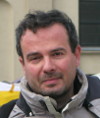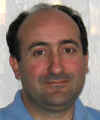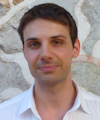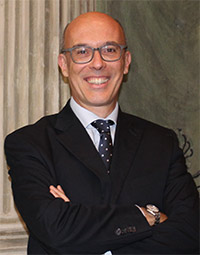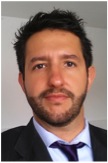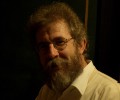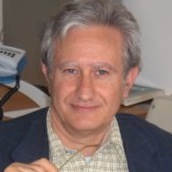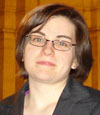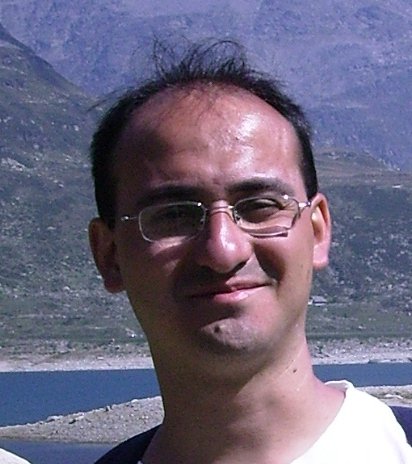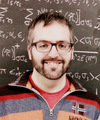Studying at the University of Verona
Here you can find information on the organisational aspects of the Programme, lecture timetables, learning activities and useful contact details for your time at the University, from enrolment to graduation.
Academic calendar
The academic calendar shows the deadlines and scheduled events that are relevant to students, teaching and technical-administrative staff of the University. Public holidays and University closures are also indicated. The academic year normally begins on 1 October each year and ends on 30 September of the following year.
Course calendar
The Academic Calendar sets out the degree programme lecture and exam timetables, as well as the relevant university closure dates..
| Period | From | To |
|---|---|---|
| I sem. | Oct 2, 2017 | Jan 31, 2018 |
| II sem. | Mar 1, 2018 | Jun 15, 2018 |
| Session | From | To |
|---|---|---|
| Sessione invernale d'esame | Feb 1, 2018 | Feb 28, 2018 |
| Sessione estiva d'esame | Jun 18, 2018 | Jul 31, 2018 |
| Sessione autunnale d'esame | Sep 3, 2018 | Sep 28, 2018 |
| Session | From | To |
|---|---|---|
| Sessione di laurea estiva | Jul 18, 2018 | Jul 18, 2018 |
| Sessione di laurea autunnale | Nov 22, 2018 | Nov 22, 2018 |
| Sessione di laurea invernale | Mar 20, 2019 | Mar 20, 2019 |
| Period | From | To |
|---|---|---|
| Christmas break | Dec 22, 2017 | Jan 7, 2018 |
| Easter break | Mar 30, 2018 | Apr 3, 2018 |
| Patron Saint Day | May 21, 2018 | May 21, 2018 |
| Vacanze estive | Aug 6, 2018 | Aug 19, 2018 |
Exam calendar
Exam dates and rounds are managed by the relevant Science and Engineering Teaching and Student Services Unit.
To view all the exam sessions available, please use the Exam dashboard on ESSE3.
If you forgot your login details or have problems logging in, please contact the relevant IT HelpDesk, or check the login details recovery web page.
Should you have any doubts or questions, please check the Enrollment FAQs
Academic staff
 alberto.benvegnu@univr.it
alberto.benvegnu@univr.it
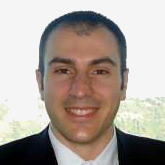
Bloisi Domenico Daniele
 domenico.bloisi@univr.it
domenico.bloisi@univr.it
 maurizio.boscaini@univr.it
maurizio.boscaini@univr.it
 federico.busato@univr.it
federico.busato@univr.it
 bruno.gobbi@univr.it
bruno.gobbi@univr.it
Ugolini Simone
 simone.ugolini@univr.it
simone.ugolini@univr.it
Study Plan
The Study Plan includes all modules, teaching and learning activities that each student will need to undertake during their time at the University.
Please select your Study Plan based on your enrollment year.
1° Year
| Modules | Credits | TAF | SSD |
|---|
2° Year activated in the A.Y. 2018/2019
| Modules | Credits | TAF | SSD |
|---|
3° Year activated in the A.Y. 2019/2020
| Modules | Credits | TAF | SSD |
|---|
| Modules | Credits | TAF | SSD |
|---|
| Modules | Credits | TAF | SSD |
|---|
| Modules | Credits | TAF | SSD |
|---|
Legend | Type of training activity (TTA)
TAF (Type of Educational Activity) All courses and activities are classified into different types of educational activities, indicated by a letter.
Mathematical analysis (2017/2018)
Teaching code
4S00006
Academic staff
Coordinator
Credits
6
Language
Italian
Scientific Disciplinary Sector (SSD)
MAT/05 - MATHEMATICAL ANALYSIS
Period
I sem. dal Oct 2, 2017 al Jan 31, 2018.
Learning outcomes
Knowledge and understanding: students will master the fundamental notions of differential and integral calculus and the foundations of the symbolic logic and discrete mathematics.
Applying knowledge and understanding: students will be able to analyze and model problems rigorously; apply effectively mathematical-logical techniques (deduction, induction, function optimization, asymptotic analysis, elementary combinatorics); recognize right logical reasoning and identify mistakes in deductive processes.
Program
1) Some notions of set theory.
2) The complete ordered field of the real numbers. Subsets of R. Complex numbers.
3) Euclidean distance and induced topology on the real line. Absolute value of a real number. Cartesian plane.
4) Real functions of one real variable.
5) Polynomials and polynomial functions. Power, exponential and logarithmic functions. Trigonometric functions.
6) Sequences.
7) Limit of a function of one real variable.
8) Continuity of a function of one real variable at one point. Fundamental theorems on continuos functions.
9) Derivative of a function. Derivation rules. Fundamental theorems on differentiable functions.
10) Monotonicity of a function. Local and global minima and maxima of a function.
11) Convex functions.
12) Taylor polynomials.
13) Riemann integral. Integration rules. Improper integrals.
| Author | Title | Publishing house | Year | ISBN | Notes |
|---|---|---|---|---|---|
| M.Bramanti,C.D.Pagani,S.Salsa | Analisi Matematica 1 | Zanichelli | 2009 | 978-88-08-06485-1 |
Examination Methods
The final exam is written and must be completed in 3 hours. Oral exams will not take place. The exam paper consists of open-ended exercises. The total of the marks of the exam paper is 32. Any topic dealt with during the lectures can be examined. Students are not allowed to use books, notes or electronic devices during the exam. The mark of any exercise will take into consideration not only the correctness of the results, but also the method adopted for the solution and the precise references to theoretical results (e.g. theorems) taught during the lectures. The pass mark for the exam is 18.
A midterm exam will take place during the midterm week, according to the Computer Science Department's calendar. Students who take part to the midterm (whose total of the marks is 16) can decide to solve only the second part of the exam in only one of the two dates during the exam session of February 2018. The total of the marks of the second part is 16. The final mark is given by the sum of the marks of the midterm and the second part.
Type D and Type F activities
Modules not yet included
Career prospects
Module/Programme news
News for students
There you will find information, resources and services useful during your time at the University (Student’s exam record, your study plan on ESSE3, Distance Learning courses, university email account, office forms, administrative procedures, etc.). You can log into MyUnivr with your GIA login details: only in this way will you be able to receive notification of all the notices from your teachers and your secretariat via email and soon also via the Univr app.
Graduation
List of theses and work experience proposals
| Stage | Research area |
|---|---|
| Correlated mutations | Various topics |
Attendance
As stated in the Teaching Regulations for the A.Y. 2022/2023, attendance at the course of study is not mandatory.

 +39 045 802 7072
+39 045 802 7072
